If any artist is deserving of a Beginner’s Guide, then it’s Berlin’s finest TANGERINE DREAM.
With a back catalogue spanning over a hundred albums (and that’s not including compilations), without some guidance it would be a pretty daunting task knowing where to start.
Picking a wrong entry point could quite easily put one off from delving further and in TD’s case… this would be a shame as their electronic musical journey (which looked like it had sadly ended in January this year with the passing of founder member Edgar Froese) has so many classic tracks which have gone on to influence future artists.
Founded by Froese in 1967, the band metamorphosised, both musically and personnel-wise, throughout their career. The band’s early genesis featured lengthy kosmische and experimental musical workouts which were characterised by droning organ and Mellotron textures. Championed in the UK by John Peel, this period of the band is often referred to as ‘The Pink Years’ because of the pink ear featured on the Ohr label the albums were released on.
The adoption of the Moog sequencer in the early 70s by the band and subsequent championing of it by member Christopher Franke, plus the purchase of state of the art modular synthesizers helped transform the band’s sound from its early experimental and uncommercial nature.
The newer evolving material, although hardly radio-friendly, was more melodic, electronic and musical enough to catch the ear of Richard Branson, who would go on to sign the band to his fledgling Virgin label and start off ‘The Virgin Years’. Featuring Froese, Franke and Peter Baumann, the first of the ‘classic’ TD line-ups produced albums like ‘Phaedra’ and ‘Rubycon’ which defined the ‘Berlin School’ sound of hypnotic, sequencer-driven electronic music.
Baumann was later replaced by Johannes Schmoelling in December 1979 and was partly responsible for the band’s shift to an even more melodic phase which also saw them diversifying further into film soundtrack production.
It started a run of live and studio albums which have been cited as some of the strongest of their career. ‘The Blue Years’ phase eventually saw the departure of Schmoelling in 1985 with Paul Haslinger replacing him.
With the advances in synthesizer technology, the ‘Blue Years’ heralded a more digital and latterly New-Age-style sound for the band, eventually getting them signed to Jive Electro which released the live ‘Poland’ album, a double LP recorded behind the ‘Iron Curtain’ in sub-zero temperatures.
 Even more line-up changes followed after Schmoelling left in Decmber 1985; at one point Edgar’s son Jerome joined the band, but with the integration of live saxophone, flute and percussion, TANGERINE DREAM drifted away from its more pure electronic roots and lost much of its fanbase along the way. The addition of respected synthesist Ulrich Schnauss at the end of 2014 promised a long awaited electronic renaissance.
Even more line-up changes followed after Schmoelling left in Decmber 1985; at one point Edgar’s son Jerome joined the band, but with the integration of live saxophone, flute and percussion, TANGERINE DREAM drifted away from its more pure electronic roots and lost much of its fanbase along the way. The addition of respected synthesist Ulrich Schnauss at the end of 2014 promised a long awaited electronic renaissance.
But the unexpected passing of Froese meant that this line-up was tantalisingly short-lived. With only a handful of Australian dates last November showcasing an updated version of the band’s ‘Sorcerer’ soundtrack with this stripped down line-up, it provided a fleeting glimpse of what was slated to be the ‘Quantum Years’. In a surprise announcement on 6th April 2015, Edgar’s widow Bianca Acquaye announced that TANGERINE DREAM would continue with Schnauss, Thorsten Quaeschning and Hoshiko Yamane.
This Beginner’s Guide showcases both TANGERINE DREAM tracks and ones which feature ex-members. A couple of the tracks featured in the guide are live ones, although anything in the TD back catalogue which is categorised as such should be approached with caution as their live albums were often not really live at all.
Often comprising of concert parts interspliced with studio recordings or overdubs, the most infamous being the ‘Albuquerque, Mexico’ segment of the ‘LiveMiles’ album which was promoted as being a live recording; but a subsequent comparison with a fan’s bootleg revealed that the 30 minute track actually featured nothing that was actually played at the show!
The article aims to focus on the more commercial and melodic phases of the band’s career and strives to give an entry point into one of the electronic genre’s most prolific and important artists. Those that wish to delve further could either research forward or backwards in time with an act that, alongside artists such as JEAN-MICHEL JARRE and VANGELIS, has gone onto provide some of the most influential instrumental electronic music of all time.
TANGERINE DREAM Ricochet Part Two (1975)
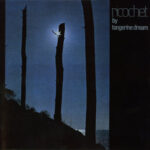 Picking a track from TD’s mid 70s ‘purple patch’ is pretty difficult as there are plenty of seminal pieces to choose from, but the B-side of the Virgin live album release ‘Ricochet’ is certainly a landmark piece of electronica. ‘Ricochet Part Two’ (which was mainly sourced from a recording at Croydon’s Fairfield Halls), starts off with a beautiful and pastoral descending Edgar Froese piano figure before being joined by layers of Mellotron flute.
Picking a track from TD’s mid 70s ‘purple patch’ is pretty difficult as there are plenty of seminal pieces to choose from, but the B-side of the Virgin live album release ‘Ricochet’ is certainly a landmark piece of electronica. ‘Ricochet Part Two’ (which was mainly sourced from a recording at Croydon’s Fairfield Halls), starts off with a beautiful and pastoral descending Edgar Froese piano figure before being joined by layers of Mellotron flute.
Then a teasing / repeating end section dies away to a hypnotic echoed sequencer part which still sounds incredible today, mainly down to the contrast with the opening of the piece. The intro is reprised later in the piece and the sound of the album signposted how purely electronic and more rhythmic the band would later become.
Available on the TANGERINE DREAM album ‘Ricochet’ via Virgin Records
TANGERINE DREAM Bent Cold Sidewalk (1978)
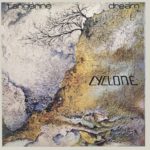 Of all the albums in TD’s back catalogue, ‘Cyclone’ alongside the latter ‘Tyger’ is generally considered the most Marmite by the band’s followers. This is down to the presence of vocals on both albums. The former work featured vocalist / flautist Steve Jolliffe alongside drummer Klaus Krieger who were drafted in following the departure of Peter Baumann. ‘Bent Cold Sidewalk’ contains many typical TANGERINE DREAM elements.
Of all the albums in TD’s back catalogue, ‘Cyclone’ alongside the latter ‘Tyger’ is generally considered the most Marmite by the band’s followers. This is down to the presence of vocals on both albums. The former work featured vocalist / flautist Steve Jolliffe alongside drummer Klaus Krieger who were drafted in following the departure of Peter Baumann. ‘Bent Cold Sidewalk’ contains many typical TANGERINE DREAM elements.
But the vocals, although effective in places, have the overall effect of dating the track to a time when Progressive Rock loomed large. The opening and closing sections of the song are pretty striking, lots of synthetic brass, rolling drum fills and Jolliffe’s surreal lyrical meanderings which although at times come a little too close to Blackadder’s Baldrick singing “See the little goblin…”. The middle section of the track which follows a more typical sequencer workout recalls Italian horror soundtrack specialists GOBLIN and could have easily been featured on the George Romero zombie classic ‘Dawn of the Dead’.
Available on the TANGERINE DREAM album ‘Cyclone’ via Virgin Records
TANGERINE DREAM Cloudburst Flight (1979)
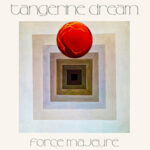 Quite possibly the track which launched several TV holiday theme tunes, ‘Cloudburst Flight’ from ‘Force Majeure’ starts with a blissed out 12 string guitar part which instantly transports you to a sun-drenched beach somewhere (obviously not too many of those in Berlin!) – a simple pulsing 8 beat bass sequencer and cross-panned electronic percussion ramps up the energy level before a descending bassline and chordal synth provide the main theme to the piece.
Quite possibly the track which launched several TV holiday theme tunes, ‘Cloudburst Flight’ from ‘Force Majeure’ starts with a blissed out 12 string guitar part which instantly transports you to a sun-drenched beach somewhere (obviously not too many of those in Berlin!) – a simple pulsing 8 beat bass sequencer and cross-panned electronic percussion ramps up the energy level before a descending bassline and chordal synth provide the main theme to the piece.
A squealing Minimoog solo comes in next before the track winds down to a more sedate conclusion. It’s seven minutes length is certainly a lot more concise than many TD tracks from this era and there are also hints of PINK FLOYD too, elements of the track were re-worked for the track ‘Guido The Pimp’ from the ‘Risky Business’ soundtrack.
Available on the TANGERINE DREAM album ‘Force Majeure’ via Virgin Records
EDGAR FROESE Stuntman (1979)
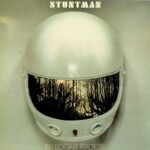 Outside of TANGERINE DREAM, Froese was prolific as a solo artist too, releasing 8 albums including ‘Stuntman’ whose title track was released as a single on the Virgin label. His solo work is insightful in assessing his contributions to his ‘normal day job’ and gives a feel for the musical and compositional elements that Froese brought to TD. ‘Stuntman’ was an ultra-concise and direct track in comparison to much of his band’s work and the nearest to a Jarre style ‘anthemic’ synth piece.
Outside of TANGERINE DREAM, Froese was prolific as a solo artist too, releasing 8 albums including ‘Stuntman’ whose title track was released as a single on the Virgin label. His solo work is insightful in assessing his contributions to his ‘normal day job’ and gives a feel for the musical and compositional elements that Froese brought to TD. ‘Stuntman’ was an ultra-concise and direct track in comparison to much of his band’s work and the nearest to a Jarre style ‘anthemic’ synth piece.
Totally drum-less, but relying on an LFO filtered bassline to carry the piece, ‘Stuntman’ is wonderfully melodic with its Minimoog lead lines and underpinning Solina string textures making this a perfect entry point into Froese’s solo excursions.
Available on the EDGAR FROESE album ‘Stuntman’ via Virgin Records
TANGERINE DREAM Tangram Set One (1980)
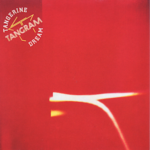 Those familiar with much of TD’s earlier work wouldn’t be surprised with an album which featured only two tracks, but what makes ‘Tangram Set One’ interesting is that rather than being a lengthy and repetitive piece, it comes across as 7 shorter compositions linked almost in a minimix format. Side one of the album really showcases Johannes Schmoelling’s arrival with the band, the track moving through different phases, slow-building sequences at the start.
Those familiar with much of TD’s earlier work wouldn’t be surprised with an album which featured only two tracks, but what makes ‘Tangram Set One’ interesting is that rather than being a lengthy and repetitive piece, it comes across as 7 shorter compositions linked almost in a minimix format. Side one of the album really showcases Johannes Schmoelling’s arrival with the band, the track moving through different phases, slow-building sequences at the start.
It truly lifts off at 3’27’ where several melodic driving sequencers converge in a quite stunning moment. The track quickly moves on through a quirky military-style break, a 6/8 part (complete with trademark Froese guitar solo) and then into a melodic Yamaha CP80 piano-based section before a percussive white noise-driven breakdown section, which surely went on to influence DEPECHE MODE’s ‘Oberkorn (It’s a Small Town)’, leads the album into an uplifting polysynth-led conclusion.
Available on the TANGERINE DREAM album ‘Tangram’ via Virgin Records
PETER BAUMANN Strangers in the Night (1983)
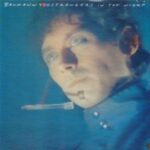 Peter Baumann left the band a couple of times, but in 1977 the split was to become permanent. An initial TD sounding / KRAFTWERK influenced solo album ‘Romance ’76’ was released while he still featured in the line-up and this was followed by ‘Trans-harmonic Nights’. This sonically / synthetically helped set the musical template for the first DEPECHE MODE and YAZOO albums with shorter more minimal synth tracks, but ultimately lacking the vocals which would eventually give both of those bands stellar success.
Peter Baumann left the band a couple of times, but in 1977 the split was to become permanent. An initial TD sounding / KRAFTWERK influenced solo album ‘Romance ’76’ was released while he still featured in the line-up and this was followed by ‘Trans-harmonic Nights’. This sonically / synthetically helped set the musical template for the first DEPECHE MODE and YAZOO albums with shorter more minimal synth tracks, but ultimately lacking the vocals which would eventually give both of those bands stellar success.
The next stage was an unexpected curveball, with Baumann trying to re-invent himself into a synthpop artist taking cues from Bowie, Numan and Foxx, although critically lacking the vocal talents to match his undeniably skilled synthesizer work. Baumann’s cover of ‘Strangers in the Night’ is a complete re-invention of the Frank Sinatra song to the point that the lyrics remain the only thing in common with the original. The synth work, production and accompanying promo video really timestamp the track, but musically, this version has aged pretty well, with all the sounds forming a template for much of today’s electronic pop.
Available on the PETER BAUMANN album ‘Strangers In The Night’ via Arista Records
Available on the PETER BAUMANN album ‘Strangers In The Night’ via Arista Records
TANGERINE DREAM Hyperborea (1983)
 ‘Hyperborea’ is an unusual album in the TANGERINE DREAM canon, as despite featuring the classic Froese / Franke / Schmoelling line-up, it doesn’t really sound like anything the act had produced previously. It was almost as if the band decided to throw out the rule book and this resulted in an album which had diverse, almost world-music influences in places. Even though the trademark driving sequencers were still present and correct, the patterns were somehow different…
‘Hyperborea’ is an unusual album in the TANGERINE DREAM canon, as despite featuring the classic Froese / Franke / Schmoelling line-up, it doesn’t really sound like anything the act had produced previously. It was almost as if the band decided to throw out the rule book and this resulted in an album which had diverse, almost world-music influences in places. Even though the trademark driving sequencers were still present and correct, the patterns were somehow different…
The title track is the undeniable centrepiece of the album, a glorious two movement, pulse-slowing piece which mainly revolves around a simple descending rich resonant bass and a syncopated gated chordal synth part. A sparse kick and snare pattern ticks away in the background whilst musically the piece perfectly matches the album artwork of a giant glacier. According to Greek mythology, Hyperboreans were mythical people who lived in the far north where the sun shined for 24 hours a day, possibly suggesting an area in the Arctic Circle.
Available on the TANGERINE DREAM album ‘Hyperborea’ via Virgin Records
TANGERINE DREAM Love On A Real Train (1983)
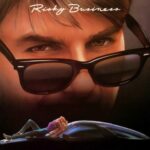 The track which helped sealed TD’s Hollywood film soundtrack credentials is undeniably ‘Love On A Real Train’. Soundtracking Tom Cruise and Rebecca De Mornay’s passionate (and let’s face it, softcore porn-ish) encounter in ‘Risky Business’, it is hard to imagine dance acts like CHICANE and BT sounding the same without the influence that this piece surely had on them. The track itself is beautifully textured, with subtle layers of electric piano, breathy pads and an iconic descending sequencer part.
The track which helped sealed TD’s Hollywood film soundtrack credentials is undeniably ‘Love On A Real Train’. Soundtracking Tom Cruise and Rebecca De Mornay’s passionate (and let’s face it, softcore porn-ish) encounter in ‘Risky Business’, it is hard to imagine dance acts like CHICANE and BT sounding the same without the influence that this piece surely had on them. The track itself is beautifully textured, with subtle layers of electric piano, breathy pads and an iconic descending sequencer part.
Subtle shakers and percussion help generate the travelling momentum of the piece while a cyclical bass mixes with the Steve Reich ‘Music for 18 Musicians’ – influenced sequencer elements. In what turned out to be the band’s final album for Virgin, the soundtrack itself actually only featured 15 minutes worth of TD music, the rest comprising of MOR acts such as JOURNEY, PHIL COLLINS and BOB SEGER.
Available on the ‘Risky Business’ OST (V/A) via Virgin Records
TANGERINE DREAM Warsaw In The Sun (1984)
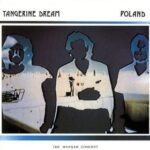 If any criticism could be laid at a lot of mid-period TD work, it would be that much of the percussive / drum elements were often neglected in favour of the intricacy of the musical elements. The majority of the drum programming was pretty basic but functional, and this is not an accusation that can be aimed at this piece. ‘Warsaw In The Sun’ was one of the standout sections from the ‘Barbakane’ side of the ‘Poland’ live album and is hands down one of the most heavy hitting and melodic TD tracks.
If any criticism could be laid at a lot of mid-period TD work, it would be that much of the percussive / drum elements were often neglected in favour of the intricacy of the musical elements. The majority of the drum programming was pretty basic but functional, and this is not an accusation that can be aimed at this piece. ‘Warsaw In The Sun’ was one of the standout sections from the ‘Barbakane’ side of the ‘Poland’ live album and is hands down one of the most heavy hitting and melodic TD tracks.
Released as a single in two sections, the track has an ultra-memorable hook, with the single version having an alternative version and added Fairlight Orchestra 5 stabs for dramatic effect. The aforementioned kick and snare are almost like DEPECHE MODE in their power and fans of this track are highly recommended to invest in the ‘Poland’ album, which is consistently strong over its four 20+ minute pieces.
Available on the TANGERINE DREAM album ‘Poland’ via Jive Records
TANGERINE DREAM Charly The Kid (1984)
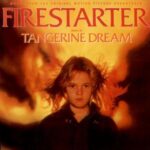 Where much of the era’s soundtrack work was lacking in subtlety, ‘Charly The Kid’ from the film adaptation of Stephen King’s ‘Firestarter’, shows a softer side to the band. Although the movie itself (like a lot of King films) was a bit of a howler, the soundtrack (the band’s fifth) is worth searching out. Although many of the music cues are short and don’t really work outside of the context of the film, ‘Charly The Kid’ with its electric piano and gentle pulsing sequencers works well as a standalone piece of music.
Where much of the era’s soundtrack work was lacking in subtlety, ‘Charly The Kid’ from the film adaptation of Stephen King’s ‘Firestarter’, shows a softer side to the band. Although the movie itself (like a lot of King films) was a bit of a howler, the soundtrack (the band’s fifth) is worth searching out. Although many of the music cues are short and don’t really work outside of the context of the film, ‘Charly The Kid’ with its electric piano and gentle pulsing sequencers works well as a standalone piece of music.
In typical film soundtrack mode, the theme from this track also crops up on three other pieces featured on the album: ‘Crystal Voice’, ‘Shop Territory’. Other TD soundtracks worthy of investigation are ‘Sorcerer’, ‘Thief’, ‘Flashpoint’ and the excellent Kathryn Bigelow vampire pic ‘Near Dark’.
Available on the TANGERINE DREAM album ‘Firestarter’ OST via Jive Records
KLAUS SCHULZE Freeze (1984)
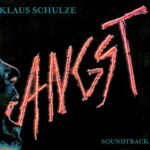 Former TD drummer Klaus Schulze managed to carve out a successful solo career after leaving the band in 1970 and is still making music now, including some successful collaborative work with DEAD CAN DANCE vocalist Lisa Gerrard. Most of his early albums featured lengthy 20-30 minute pieces which were less melodic and more improvisational than the direction his former employers went on to follow.
Former TD drummer Klaus Schulze managed to carve out a successful solo career after leaving the band in 1970 and is still making music now, including some successful collaborative work with DEAD CAN DANCE vocalist Lisa Gerrard. Most of his early albums featured lengthy 20-30 minute pieces which were less melodic and more improvisational than the direction his former employers went on to follow.
‘Freeze’, a far shorter and more direct track was used alongside cuts from SHRIEKBACK and IRON BUTTERFLY to great effect in Michael Mann’s ‘Manhunter’. The film, which introduced the cinematic world to Hannibal Lecter (spelt ‘Lecktor’ in this version) was certainly enhanced by its cutting edge (at the time) soundtrack, and the icy Fairlight textures used here by Schulze worked perfectly in the story of the now iconic serial killer.
Available on the KLAUS SCHULZE album ‘Angst’ via Inteam
TANGERINE DREAM Song Of The Whale – Part One: From Dawn (1986)
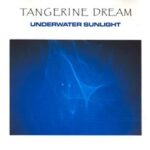 The ‘Underwater Sunlight’ album is seen by many as one of the band’s last quality albums. Although skirting perilously close to New Age music in places, the opening track on the album (which comes in two parts) is undeniably lush and beautifully engineered – starting with percussive sequencers and breathy digital synths before synthetic guitars join the main theme.
The ‘Underwater Sunlight’ album is seen by many as one of the band’s last quality albums. Although skirting perilously close to New Age music in places, the opening track on the album (which comes in two parts) is undeniably lush and beautifully engineered – starting with percussive sequencers and breathy digital synths before synthetic guitars join the main theme.
Featuring Paul Haslinger on keyboards, the track also showcases Edgar Froese’s solo guitar work at 3’31’ alongside some big pre-delayed reverb-drenched drums. The piece dynamically moves through different phases before some heavier guitars lead the track back to another twin guitar solo and the main theme at the conclusion. ‘Underwater Sunlight’ the album, is definitely recommended if you are after a long player to chill out to. ‘Part Two: …To Dusk’ is more piano-based, but still beautifully melodic and the remaining pieces although generally more up-tempo make this a pretty cohesive album.
Available on the TANGERINE DREAM album ‘Underwater Sunlight’ via Jive Records
TANGERINE DREAM Running Out Of Time (1989)
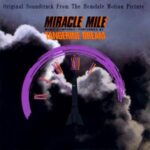 Up until 1988, the band were incredibly prolific, but this year saw a slowing down and the release of just two albums, ‘Optical Race’ and the soundtrack to the Steve de Jarnatt movie ‘Miracle Mile’. The film itself is an underappreciated little gem of a movie starring Anthony Edwards and Mare Winningham as a couple who tragically fall for each other just as the world goes into a nuclear meltdown.
Up until 1988, the band were incredibly prolific, but this year saw a slowing down and the release of just two albums, ‘Optical Race’ and the soundtrack to the Steve de Jarnatt movie ‘Miracle Mile’. The film itself is an underappreciated little gem of a movie starring Anthony Edwards and Mare Winningham as a couple who tragically fall for each other just as the world goes into a nuclear meltdown.
‘Running Out Of Time’ which (as its title suggests) is featured in the climactic portions of the film where the couple’s doomed romance ends up prematurely with their helicopter freefalling into a primordial swamp. The track is similar in vibe to ‘Love On A Real Train’ and showcases TD’s knack of creating effective soundtrack music which stands up on its own merits outside of the context of the film. During the making of the album, the band were reduced to the two piece of just Froese and Haslinger. Although the film has not dated particularly well, the soundtrack judged on its own merits still holds up.
Available on the TANGERINE DREAM album ‘Miracle Mile’ OST via Jive Records
CHRISTOPHER FRANKE Purple Waves (1992)
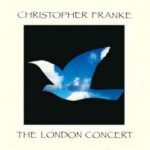 After exiting the band amicably in 1988, Christopher Franke released a few sporadic solo albums before finding his niche in writing TV and film soundtrack music, most notably for the long-running sci-fi series ‘Babylon 5’ and then setting up his own sound library company Sonic Images. Eventually relocating to Los Angeles from Berlin meant that Franke was at the very heart of the Hollywood film industry and his film work includes music for ‘Universal Soldier’, ‘The Tommyknockers’ and ‘Tales of the Crypt’.
After exiting the band amicably in 1988, Christopher Franke released a few sporadic solo albums before finding his niche in writing TV and film soundtrack music, most notably for the long-running sci-fi series ‘Babylon 5’ and then setting up his own sound library company Sonic Images. Eventually relocating to Los Angeles from Berlin meant that Franke was at the very heart of the Hollywood film industry and his film work includes music for ‘Universal Soldier’, ‘The Tommyknockers’ and ‘Tales of the Crypt’.
‘Purple Waves’ is very TD-like, ‘The London Concert’ version starting with Prophet 5 pads before bell-like digital synths provide the main melodic parts. ‘White Eagle’-style sequencers pick up the rhythm around 1’40’ before becoming more prominent in the mix around 3 minutes. The middle section of the piece is a typical long and trippy Berlin School sequencer section, with layers of monosynths being joined by a Mellotron part which harks back the early Virgin era of TANGERINE DREAM. The track eventually comes full circle with the re-introduction of the main theme in the closing part of the piece.
Available on the CHRISTOPHER FRANKE album ‘The London Concert’ via Sonic Images
TANGERINE DREAM Silver Scale (1994)
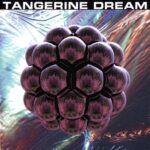 TANGERINE DREAM were certainly not adverse to a bit of cheeky musical recycling in some of their pieces. ‘Silver Scale’ is a prime example, its central sequencer riff cropping up in ‘Diamond Diary’ from the superb ‘Thief’ soundtrack, ‘Church Theme’ from the film ‘Wavelength’ and ‘Horns of Doom’. This, at the time, previously unreleased version is a remixed and extended version for the ‘Tangents’ five disc retrospective collection and successfully pulls together elements from all of the aforementioned tracks.
TANGERINE DREAM were certainly not adverse to a bit of cheeky musical recycling in some of their pieces. ‘Silver Scale’ is a prime example, its central sequencer riff cropping up in ‘Diamond Diary’ from the superb ‘Thief’ soundtrack, ‘Church Theme’ from the film ‘Wavelength’ and ‘Horns of Doom’. This, at the time, previously unreleased version is a remixed and extended version for the ‘Tangents’ five disc retrospective collection and successfully pulls together elements from all of the aforementioned tracks.
Wonderful echoed sequencer work and ethereal shifting chords make this an essential inclusion on any TD compilation.
Available on the TANGERINE DREAM box set ‘Tangents 1973 -1983’ via Virgin Records
LOOM Cloudwalk (2013)
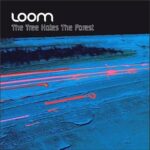 The LOOM project is inextricably linked with TANGERINE DREAM in that it includes both ex-members Johannes Schmoelling and Jerome Froese alongside Robert Waters. As well as their own original material, the LOOM live show usually features TD tracks from both the Jerome Froese and Schmoelling eras. ‘Cloudwalk’ is a graceful, floating and rhythmically intriguing electronic piece, beautifully melodic, starting out in waltz time before shifting to 4/4.
The LOOM project is inextricably linked with TANGERINE DREAM in that it includes both ex-members Johannes Schmoelling and Jerome Froese alongside Robert Waters. As well as their own original material, the LOOM live show usually features TD tracks from both the Jerome Froese and Schmoelling eras. ‘Cloudwalk’ is a graceful, floating and rhythmically intriguing electronic piece, beautifully melodic, starting out in waltz time before shifting to 4/4.
The drums throughout are skittering and bitcrushed and suit the quirky sound of the track. If you listen carefully, you can hear musical nods and references to the vocal melody of ‘Bent Cold Sidewalk’.
Available on the LOOM album ‘The Tree Hates The Forest’ via Viktoriapark
JEAN-MICHEL JARRE & TANGERINE DREAM Zero Gravity (2015)
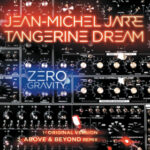 Possibly one of the last pieces that Froese worked on before his passing, ‘Zero Gravity’ is a dream (sorry!) combination of TANGERINE DREAM and French synth maestro JEAN-MICHEL JARRE. A collaboration that was a no-brainer, considering the two acts’ career trajectories, has resulted in a track that sounds more like TD than Jarre with its hypnotic sequencer patterns and melodic shifts.
Possibly one of the last pieces that Froese worked on before his passing, ‘Zero Gravity’ is a dream (sorry!) combination of TANGERINE DREAM and French synth maestro JEAN-MICHEL JARRE. A collaboration that was a no-brainer, considering the two acts’ career trajectories, has resulted in a track that sounds more like TD than Jarre with its hypnotic sequencer patterns and melodic shifts.
The ABOVE & BEYOND remix takes the main theme and chord progression to turn it into one of their trademark melodic trance tracks. ABOVE & BEYOND were the ideal choice to remix the collaboration, having been influenced by the formative Jarre / TD works which have helped set the musical template for the whole melodic trance and dance genre.
Available on the JEAN-MICHEL JARRE & TANGERINE DREAM single ‘Zero Gravity’ via The Vinyl Factory
Dedicated to the memory of EDGAR FROESE 1944-2015
http://www.tangerinedream.org/
https://www.facebook.com/TANGERINEDREAM.OFFICIAL
Text by Paul Boddy
15th August 2015

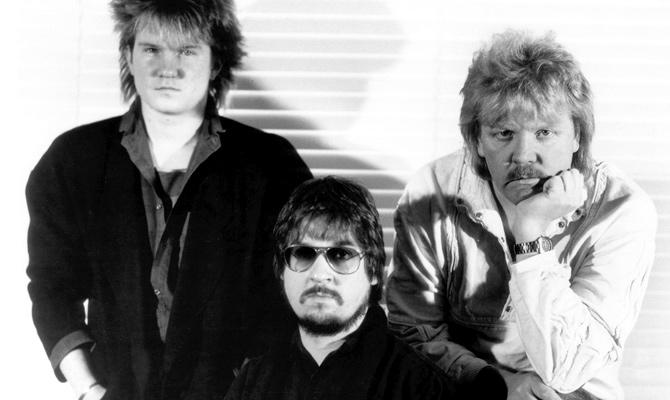
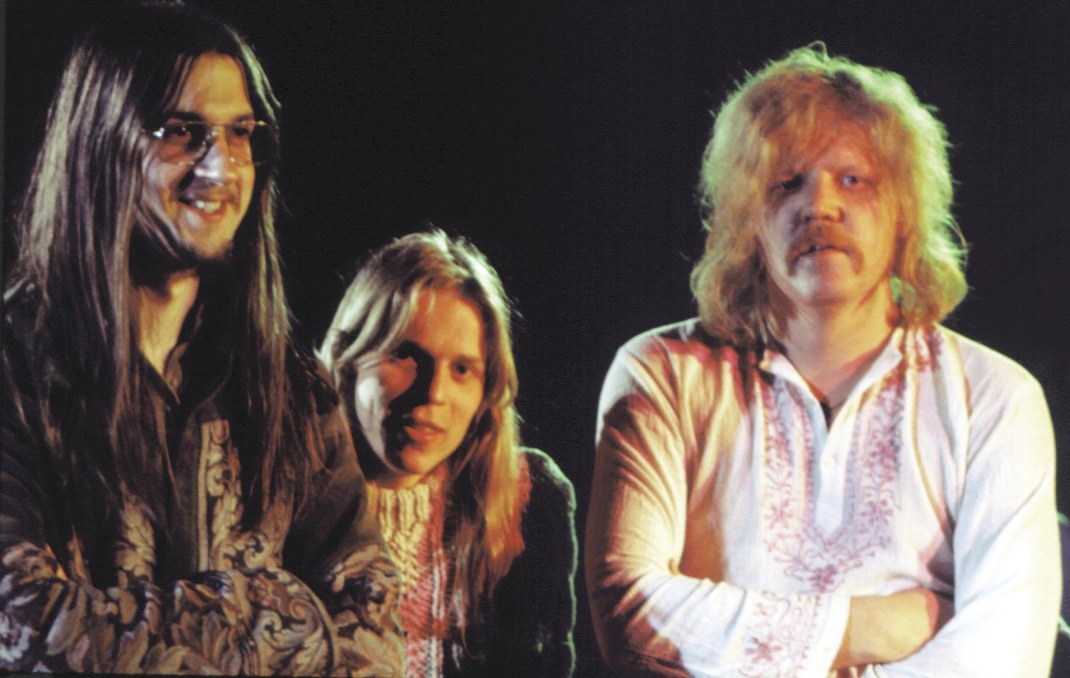
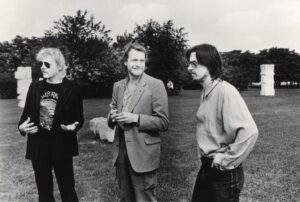
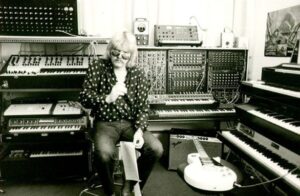
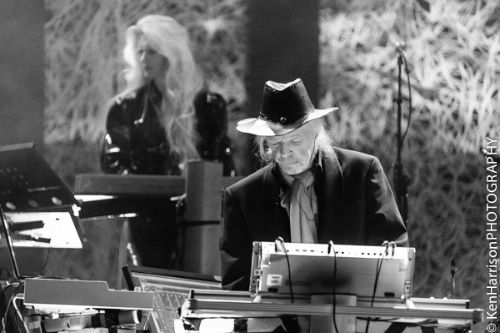
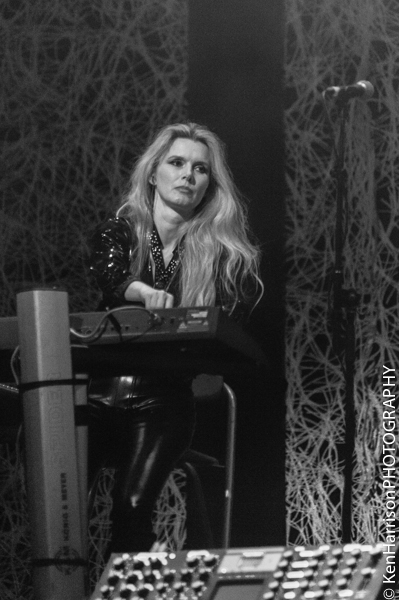
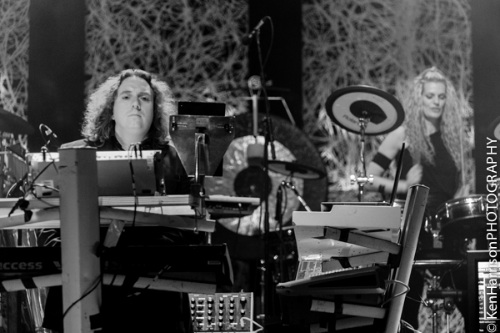
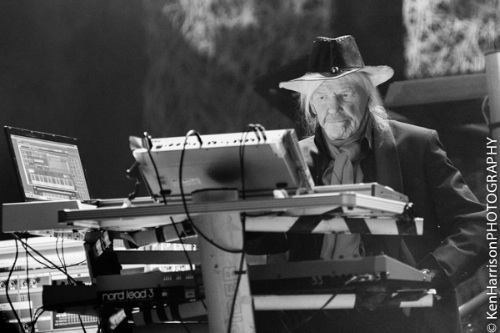 After the second set drew to a close, the audience were finally treated to an extended extract from ‘Phaedra’ for the encore and then finished the evening with ‘The Silver Boots of Bartlett Green’.
After the second set drew to a close, the audience were finally treated to an extended extract from ‘Phaedra’ for the encore and then finished the evening with ‘The Silver Boots of Bartlett Green’.
Follow Us!